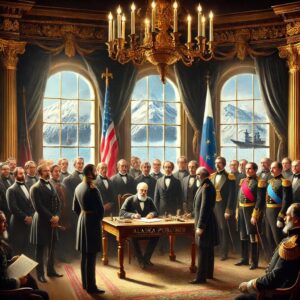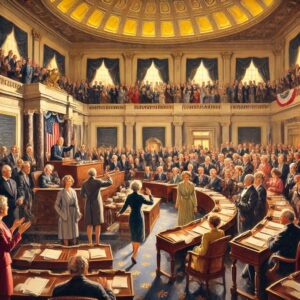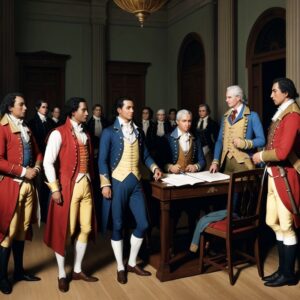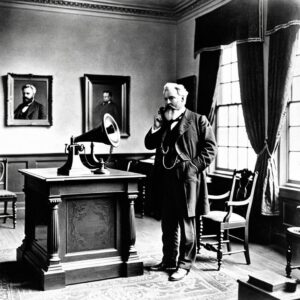
The assassination of President John F. Kennedy on November 22, 1963, is one of the most shocking and debated events in American history. Despite the official conclusion that Lee Harvey Oswald acted alone, theories about conspiracies, cover-ups, and foreign involvement have persisted for decades. In March 2025, the U.S. government declassified a massive batch of documents related to the assassination, offering a fresh look at the investigation and the political world of the 1960s. These newly released files have reignited public interest in the case, providing new details while largely reinforcing the long-standing conclusion that Oswald was the lone gunman. But, as always, the release raises new questions and fuels ongoing speculation.
Reinforcing the Warren Commission’s Conclusion
At the heart of these newly revealed documents are the findings of the Warren Commission, which was set up shortly after Kennedy’s assassination to investigate what happened. The Commission concluded in 1964 that Oswald was responsible for the killing, acting alone. The newly released files largely confirm this conclusion, offering more context about Oswald’s life—his time in the Soviet Union, his radical views, and his ties to communist groups. The documents provide a clearer picture of the FBI’s surveillance on Oswald, shedding light on his activities before and after the assassination. Despite the ongoing conspiracy theories, the files don’t provide any earth-shattering evidence that changes the original narrative: Oswald, for better or worse, is still seen as the lone gunman.
A Cold War Context
One of the most interesting things these files offer is a deeper understanding of the Cold War climate in which the assassination took place. The documents reveal just how closely the U.S. government was watching Oswald and his connections to the Soviet Union and Cuba. While it was clear that Oswald had ties to the Soviet Union, the files do not present any proof that the Soviet government or its intelligence agencies played a role in the assassination. Similarly, the government’s suspicions about Cuba’s involvement, sparked by the fraught relationship between the U.S. and Fidel Castro’s regime, are explored, but again, no direct link to the assassination is found. There’s plenty of evidence in the files about U.S. fears of foreign influence, but it still doesn’t suggest that a foreign power was behind Kennedy’s death.
The Persistence of Conspiracy Theories
Despite the mountain of evidence in the files, the conspiracy theories surrounding Kennedy’s assassination are far from going away. Since the assassination, people have speculated about the involvement of the Mafia, the CIA, or even shadowy government forces, and the new documents don’t put those theories to rest. If anything, they highlight how the public’s fascination with alternative explanations grew over time. The FBI’s investigation explored many of these leads, but most came to nothing. Still, the allure of conspiracy remains strong. People continue to search for answers in these files, hoping for a smoking gun that will confirm their suspicions.
The documents also show how the government handled the investigation. The FBI tracked down leads and gathered evidence, some of which proved unhelpful, but many of the files show that the authorities were genuinely trying to figure out what happened—despite the occasional misstep or overlooked detail. This adds a bit of texture to the investigation, showing that even those who were investigating were working within the confines of a highly charged political climate.
The Secret Files We Still Don’t Have
Even with all the new information, the release isn’t complete. Some documents, including recent FBI reports and other sensitive materials, remain sealed. This continuing secrecy only fuels suspicions that there’s more to the story that the government isn’t ready to share. While the released files give us a lot of new material to sift through, it’s clear that we might never have the full picture. The government has promised that more documents will be released in the future, but whether these will provide the final answers remains to be seen.
So, What Does All This Mean?
The release of these documents is a huge deal for historians, researchers, and anyone who’s ever been fascinated by the JFK assassination. While the files offer new details about the investigation and the Cold War context of the time, they don’t dramatically change the narrative that Oswald acted alone. There are more insights into the U.S. government’s fears about Cuba and the Soviet Union, and the documents provide a more detailed account of the FBI’s role in the investigation. But despite the thousands of pages released, many of the questions that have lingered for decades remain unanswered.
The mystery surrounding Kennedy’s death isn’t likely to be solved anytime soon. The files may help us understand more about the context of the time, but they don’t offer the definitive breakthrough that some people had hoped for. Still, this release has brought us one step closer to understanding the events of that fateful day in Dallas—and yet, for all we’ve learned, the JFK assassination continues to remain one of the greatest mysteries in modern American history.































